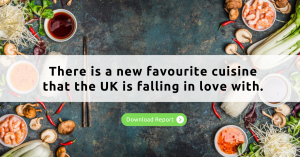At Serendipity Int, we decided to put together a list of the top 11 SEO Trends and opportunities for 2023 that your brand and business can invest in to increase your business growth.
SEO Automation and scalability
Even though the entire SEO workflow is too complicated to be automated, with the emergence of AI-driven technologies we can expect to see more workflows that will help us improve our operational efficiency in certain areas such as follows
- Segmenting pages
- Keywords analysis and matching
- Content briefs
- Structured data generation
- Redirect relevancy
- Internal link analysis
- Log analysis
- Merging data
- Trends analysis
Data and analytics infrastructure
SEO is long term engagement, and Google’s algorithms are highly unpredictable. There is so much data generated and the better you can make actionable predictions and decisions, see results from your campaigns in the long run.
We recommend that you evaluate your stack that fits your needs based on the specific questions you are trying to answer to drive your SEO strategy. Interpreting your data correctly is key. By using data analytics appropriately, you can make improvements to your website to satisfy your audience’s needs and wants
Core web vitals optimisation
One of your top priorities should be to optimise the speed of your page. Google confirmed Core Web Vitals are becoming ranking signals for search results in May 2022.
The ‘page experience’ signal combines Core Web Vitals with the following signals:
- Largest Contentful Paint (LCP): Focus on the critical rendering path and optimise your server response to ensure the main content in viewport loads under Google’s recommendation of 2.5 seconds.
- First Input Delay (FID): Reduce Total Blocking Time and review the critical rendering path. Your goal should be under 100 milliseconds.
- Cumulative Layout Shift (CLP): Reserve static image space for images, videos, ads, etc., and aim for your pages to have a score of less than 0.1
- Mobile-friendliness: Google will only look at mobile pages with mobile-only indexing. If your website is not mobile-friendly, make sure to fix that as a starting point.
- Safe browsing: Ensure your website provides a safe and secure browsing experience. Migrate to HTTPS if you haven’t already done so.
- User experience: Provide a good user experience with interstitials by avoiding covering the main content as this provides a poor experience for your customers and can lead to your site being penalised.
Core Web Vitals were introduced earlier and are designed to measure how users experience the speed, responsiveness, and visual stability of a page.
Mobile First
In 2019, Google rolled out mobile-first indexing, meaning the search engine looks primarily at the mobile version of a website, considering this the “primary” version instead of the desktop version. By March 2022, Google will have switched all websites from desktop-first to mobile-first indexing, having been through a transitional period of moving sites over when their systems recognised that they were ready to do so.
This change makes sense, given that nearly 73% of internet users will access the internet solely via mobile devices by 2025.
Semantic search and user intent matching
Google has shifted its focus towards an intent-matching engine from a keyword matching engine through semantic mapping to understand the searcher’s query and return better results. Satisfying search intent is a primary goal for Google and during the last few years, Google has been extensively focusing on improving the results to connect with users’ intent.
Finding gaps through analysing SERPs, evaluating and integrating into the keyword research and mapping will be essential to the structure and format of the content we should create and target.
Structured data
Structured data is a standardised format for providing information about a page and classifying that content on the page; for example, on a recipe page, what are the ingredients, the cooking time, the temperature, the calories, and so on.
In the context of SEO, structured data is turning out to be a crucial element for websites to pass critical information on a web page to search engines.
In particular, in a recent update, Google clarified:
Content in structured data is eligible for display as rich results in search.
In short, the search engine can provide additional features on the search results pages, that will enhance the visibility of your content.
Passage-based content optimisation
Google is rolling out passage-based indexing, a change that enables it to identify individual passages on a page and process them as possibly being the most relevant for a given query, even if they aren’t part of the main theme of the page. Google said passage-based indexing will affect 7% of search queries across all languages when fully rolled out globally
Our goal will be to structure content in such a way that it gets easier “for users to understand easily” that will naturally help search engines to process and understand the context of the content.
Google passage-based ranking will be a great opportunity for web pages that:
- cover multiple topics,
- have diluted content not focused on one main topic,
- cover a very general topic,
- have poor information structure (do not use headings, subheadings or paragraphs),
- have not been optimized by an SEO.
Subtopics and content clusters
Google also expects to provide better results for precise topics. As Google explained in the same announcement: “If you search for ‘home exercise equipment,’ we can now understand relevant subtopics, such as budget equipment, premium picks, or small space ideas, and show a wider range of content for you on the search results page.”
To be successful with subtopics, your site should support long-tail keyword phrases. Given recent machine-learning and AI advancements, you don’t need to keep repeating the long-tail phrases and then support it by using similar phrases.
Web stories
Google Web Stories are short, visual, slideshow-style AMP embeds, similar to Facebook or Instagram stories. Web Stories will have their dedicated carousel in Google Discover, which means a whole new opportunity for publishers to position their content for untapped, organic search traffic. The goal is to bring in new visitors to Web Stories from Google Discover. Then, the CTA at the end of those stories will entice readers to visit your site, read your blog post.
Voice search optimisation
Voice Search Optimisation is the process of using keyword research to identify long-tail keyword phrases and questions that are relevant to the services provided by our clients that a potential visitor to their website might be asking and then developing content in a structured way that answers those “questions” to capture featured snippets in the search results as 70% of the returned voice searches utilise the information returned from featured snippets.
Some of the voice search statistics
- 20% of mobile queries are currently done with voice search.
- 58% of people have used voice search to find information about a local business.
- 72% of people who use voice search devices claim they have become part of their daily routines.
With the rise of smart speakers and voice search on our mobile devices, it’s more important than ever that your business has a voice search strategy in place.
Video search carousels
Google introduced video carousels to SERPs back in 2018 and since then video carousels are included more and more and beyond purely informational queries of certain sectors on one hand, and most of these are being pulled from YouTube, which is the second most used search engine.
For strong indicators that video isn’t going anywhere, consider these statistics from a recent survey:
- 85% of businesses use video as a tool in marketing, and 92% of marketers consider video an important part of their marketing strategy
- 87% of video marketers report increased traffic to their website as a result of their videos
- 96% of people have watched explainer videos about products or services
- 84% of people cite video as part of what convinced them to buy something
This shift in preference toward video—both for users and search engines predicts that it’s time for brands to
1) begin planning and creating a lot more video content and
2) optimise their videos to improve search visibility, views, and website traffic.




